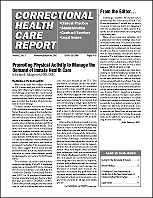A Success Story: Utilization Management in the Corrections Setting
Author: J. E. Paris, PH.D., M.D., C.C.H.P..
Source: Volume 03, Number 02, January/February 2002 , pp.21-26(6)

< previous article |next article > |return to table of contents
Abstract:
As of this writing, there were 2.1 million inmates in the United States Criminal Justice System: about 100,000 in federal prisons, 700,000 in county jails, and 1.3 million in state custody. In most states, it costs $20,000 to $30,000 a year to maintain one inmate. A substantial portion of the expenses is represented by medical care costs. These are increasing both in the community at large and in corrections. In Georgia by 1998, there was a pressing need to create mechanisms to curb this explosive trend. It is generally agreed that Utilization Management (UM) is now an essential ingredient in the provision of correctional health care services. The final shape of a UM system, however, is heavily dependent on the structure and financial incentives of the correctional health care model chosen. This article begins with an initial discussion of a number of different theoretical models. In the following assessments it is assumed that a state department of corrections (DOC) is ultimately responsible for the quality of inmate services, and its financing.Keywords: over-utilization, capitated management contract, delivery models, UM Medical Director, Hospital Admissions, Bed Utilization, SCRIBE
Affiliations:
1: Georgia Department of Corrections.